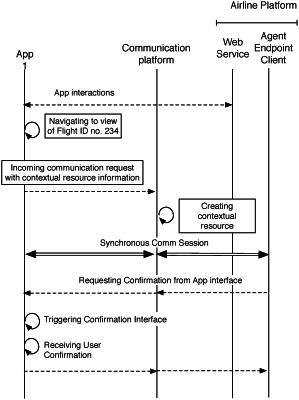| CPC H04L 67/141 (2013.01) [G06Q 30/016 (2013.01); H04L 65/403 (2013.01); H04L 67/14 (2013.01); H04M 3/51 (2013.01); H04M 3/523 (2013.01)] | 17 Claims |

|
1. A method comprising:
creating a contextual resource with contextual information about a first communication session using a first communication modality between a first device and a server device, the contextual information indicating a state of an application, the state of the application being set from a user action providing user information;
detecting, by a communication platform, a request from the first device for a second communication session using a second communication modality different from the first communication modality and overlapping in time with the first communication session;
accessing, in response to the request for the second communication session, the contextual resource;
selecting, based on the contextual resource, a second device of a destination endpoint for the second communication session;
establishing the second communication session between the first device and the server device using the second communication modality;
rerouting the established second communication session to the second device based on the contextual information about the first communication session;
receiving an Application Programing Interface (API) request for the contextual resource from the second device;
transmitting at least a portion of the contextual information maintained by the contextual resource to the second device, the portion indicating the state of the application set from the user action providing the user information, the second device causing presentation of a customized user interface based on the portion of the contextual information;
receiving a further request from the first device via the first communication session that uses the first communication modality; and
providing a response to the further request to the first device via the second communication session that overlaps in time with the first communication session and uses the second communication modality that is different from the first communication modality.
|